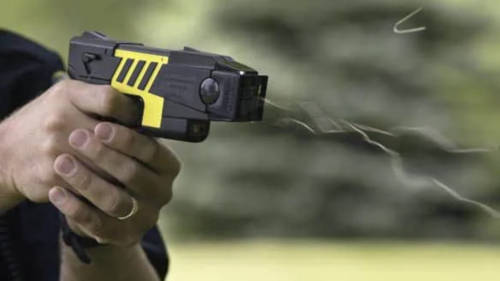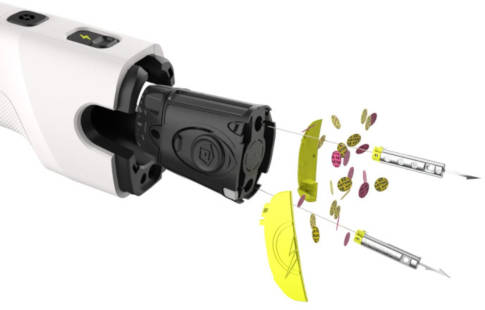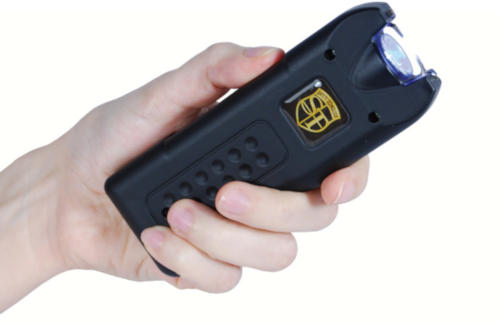What Does It Feel Like to Be Stunned by a Stun Gun?

Stun guns—often called tasers—are a staple in police training and self-defense, designed to stop someone in their tracks without fatal harm. But what does it really feel like to be hit by one? Beyond the jolt, the psychological scars can linger—fear, confusion, even trauma. This post dives into the immediate sting and the mental aftermath, unpacking what science and survivors say about being stunned.
How Stun Guns Work—and What They Do to You
Stun guns deliver a high-voltage, low-amperage electric shock, temporarily scrambling your nervous system. Handheld models zap on contact; TASERs fire barbs up to 15 feet, triggering Neuromuscular Incapacitation (NMI). The result? Intense pain, muscle lockup, and a brief loss of control. Police love them for their non-lethal edge—95% effective, says TASER data—but critics flag risks like heart strain or repeated shocks amplifying damage. Either way, the experience hits hard, physically and mentally.
A TASER in action—effective, but not without impact.
Immediate Effects: Pain, Shock, and Disorientation
So, what does a stun gun feel like? Imagine a searing, electric punch—muscles seize, pain radiates, and your body betrays you. Victims report:
- Physical: Spasms, tingling, sometimes nausea or dizziness.
- Mental: Confusion, fear, and a surreal “what just happened?” fog.
A 2019 study showed 91% of stun gun recipients felt psychological distress—think panic or vulnerability. The shock’s loud crack alone can freeze you, even before the current hits. For some, it’s over in minutes; for others, the unease lingers.
Compact but powerful—the Bolt 2 delivers a jolt you won’t forget.
Short-Term Psychological Fallout
The stun fades, but the mind reels. Short-term effects include:
- Pain’s Echo: Aches where the probes hit, amplifying distress.
- Emotional Toll: Anxiety, humiliation, or helplessness—91% report this per one study.
- Disorientation: Memory gaps or a dazed state, like dissociative amnesia.
Unconsciousness can strike too, lasting minutes, leaving you exposed and rattled. These reactions vary—your baseline mental health, age, or context (e.g., police encounter vs. self-defense) shape the intensity.
Long-Term Risks: Trauma That Sticks
For some, being stunned isn’t a one-and-done shock. Research ties it to:
- PTSD: Flashbacks or nightmares, especially after repeated shocks.
- Anxiety/Depression: A 2019 EEG study likened stun gun effects to mild brain trauma.
- Memory Issues: Persistent gaps or fog, though data’s thin.
Critics argue stun guns rival lethal force in trauma potential—cardiac risks aside, the mental hit can scar. Yet, studies on cops using them show minimal long-term disruption, suggesting resilience varies. More research is needed, but the stakes are clear: one jolt can rewire your sense of safety.
Direct-contact stun guns pack a psychological punch too.
Minimizing the Damage—What Helps
Caught a stun gun blast? Here’s how to cope:
- Medical Check: Get seen fast—headaches, heart flutters, or breathing issues need attention.
- Emotional Support: Lean on friends or pros—trauma counseling (like CBT) can reframe the fear.
- Self-Care: Sleep, eat, move—basic stability cuts stress.
Police and civilians alike should weigh these risks. Training helps users minimize harm, but victims need support to heal.
The Debate: Deterrent or Danger?
Stun guns deter crime—supporters cite their 95% takedown rate. But detractors say the pain and trauma outweigh the benefits, especially for vulnerable folks. Physical risks (burns, falls) mingle with mental ones (PTSD, panic). The truth? They’re effective but not harmless—every shock’s a gamble.
Conclusion
Being stunned feels like a lightning strike—sharp, chaotic, and unforgettable. The physical sting fades, but the psychological ripples can last, from fleeting fear to deep trauma. Know the risks, seek help if it happens, and weigh the stakes if you carry one. Stun guns save lives, but they don’t leave minds unscathed.
FAQ
- What does a stun gun feel like? Intense pain, muscle lockup, and confusion—think electric fire.
- How long do effects last? Physical: minutes to hours; mental: days to years, depending.
- Can it cause permanent damage? Possibly—PTSD or memory issues linger for some.
Related: Shop TASER Bolt 2 | Police Stun Gun Flashlight
Add your comment now!
Post CommentRecent posts
-
06/27/2025Personal Safety Devices for Women
-
06/27/2025Can You Bring Pepper Spray on a Plane?
-
06/27/2025Are Butterfly Knives Illegal?



